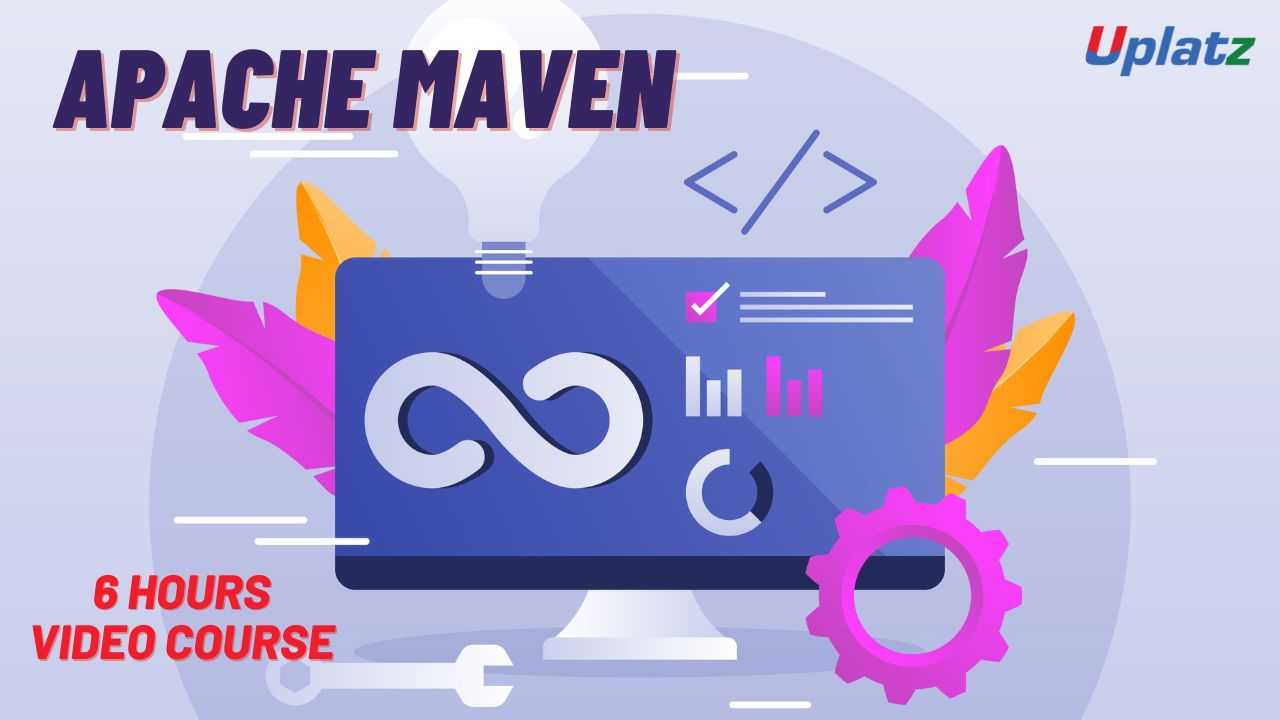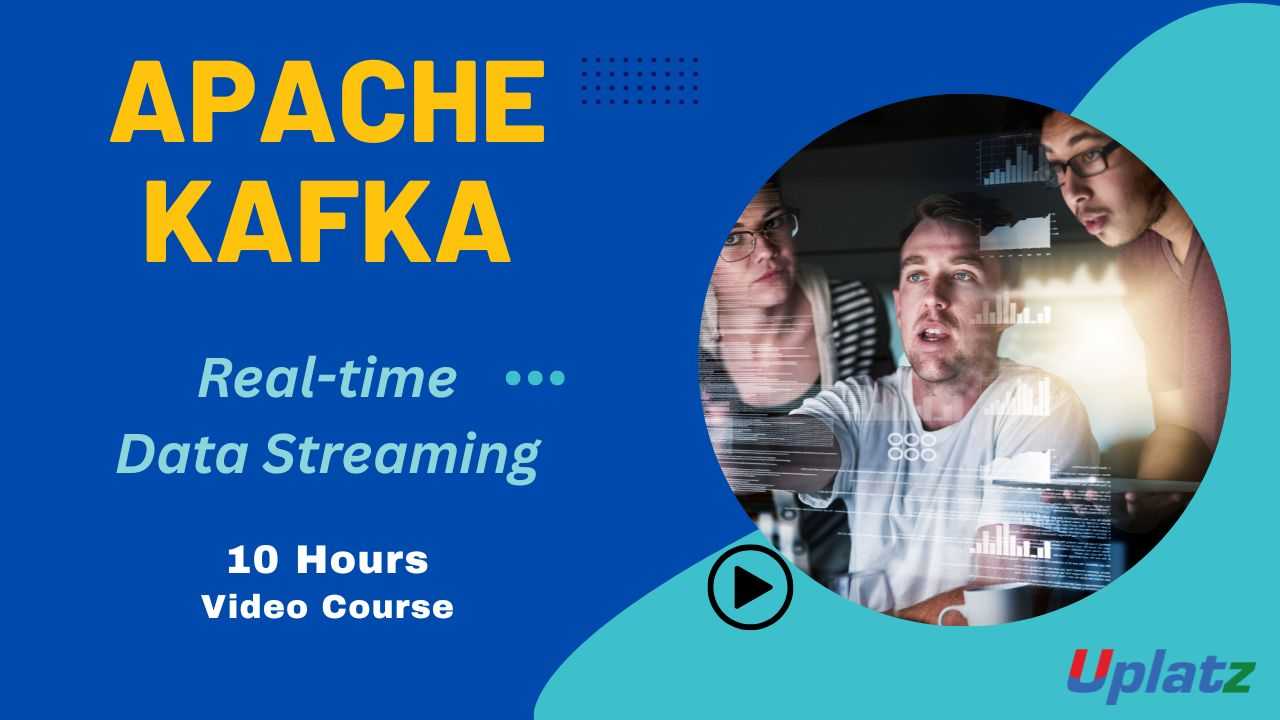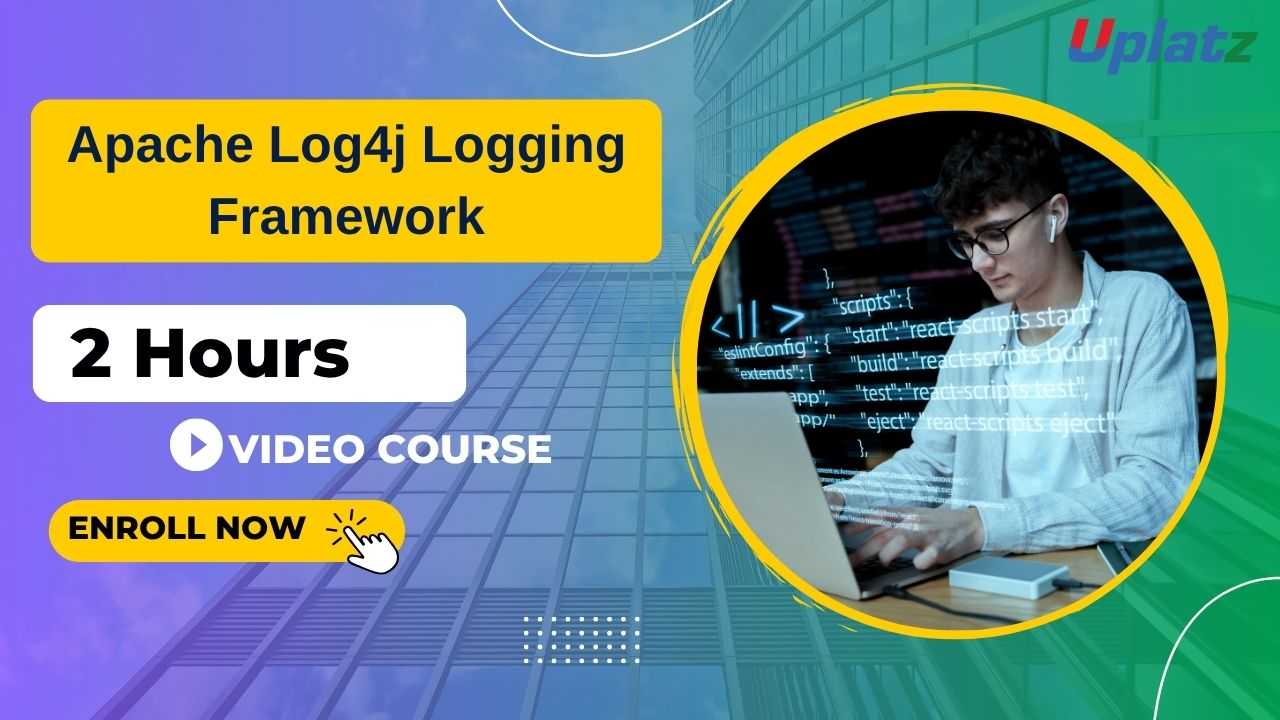Apache Flink
Master Real-Time Data Processing with Apache Flink – Build Scalable Stream Processing Applications from ScratchPreview Apache Flink course
Price Match Guarantee Full Lifetime Access Access on any Device Technical Support Secure Checkout Course Completion Certificate 96% Started a new career
BUY THIS COURSE (
96% Started a new career
BUY THIS COURSE (GBP 12 GBP 29 )-
 85% Got a pay increase and promotion
85% Got a pay increase and promotion
Students also bought -
-

- Apache Maven
- 6 Hours
- GBP 12
- 765 Learners
-

- Apache Kafka
- 10 Hours
- GBP 12
- 1476 Learners
-

- Apache Log4j Logging Framework
- 2 Hours
- GBP 12
- 894 Learners

-
A real-time dashboard aggregating metrics from IoT devices.
-
A fraud detection system processing financial transactions on the fly.
-
A log monitoring pipeline with alerts for system anomalies.
-
Design and implement event-time and processing-time windowed aggregations.
-
Manage Flink job state and checkpoints for fault tolerance.
-
Integrate Flink with Kafka, Elasticsearch, and JDBC.
-
Deploy, monitor, and scale Flink jobs in production.
-
Data engineers and developers moving into stream processing.
-
Software architects designing real-time data systems.
-
Engineers familiar with batch processing tools like Spark who want to learn Flink.
-
Professionals working with Kafka, RabbitMQ, or message brokers.
-
Anyone aiming to build event-driven microservices or analytics dashboards.
-
Start Sequentially: Build a strong foundation by following modules in order.
-
Code Along: Hands-on implementation is key to mastering Flink.
-
Experiment: Tweak parameters, use different state backends, and explore Flink SQL.
-
Document Learnings: Keep notes and bookmark configurations and troubleshooting tips.
-
Explore Flink’s Ecosystem: Use connectors and libraries to expand your workflow.
-
Deploy Early: Try deploying to local clusters, then move to Kubernetes or AWS EMR.
-
Rebuild Projects: Repetition will deepen your understanding.
Course/Topic 1 - Coming Soon
-
The videos for this course are being recorded freshly and should be available in a few days. Please contact info@uplatz.com to know the exact date of the release of this course.
By the end of this course, you will be able to:
-
Understand the core architecture of Apache Flink.
-
Build and manage real-time streaming jobs with Flink’s DataStream API.
-
Implement windowing strategies for event-time and processing-time analytics.
-
Use Flink with Kafka, JDBC, and Elasticsearch for end-to-end data pipelines.
-
Handle checkpointing, savepoints, and stateful processing.
-
Deploy Flink jobs on local clusters, YARN, or Kubernetes.
Course Syllabus
Module 1: Introduction to Stream Processing
-
Batch vs Stream Processing
-
Why Flink? Use Cases
Module 2: Flink Architecture and Environment Setup
-
Job Manager and Task Manager
-
Setting Up Flink Locally
Module 3: DataStream API Fundamentals
-
Source, Transformations, and Sinks
-
Stateless vs Stateful Operators
Module 4: Event Time and Watermarks
-
Time Characteristics
-
Watermark Strategies
Module 5: Windowed Operations
-
Tumbling, Sliding, and Session Windows
-
Window Aggregations
Module 6: Managing State and Fault Tolerance
-
State Backends
-
Checkpointing and Savepoints
Module 7: Flink SQL and Table API
-
Writing SQL Queries
-
Joining Streams and Tables
Module 8: Integration with Kafka and JDBC
-
Reading/Writing to Kafka
-
Sink to JDBC, Elasticsearch
Module 9: Projects and Real-World Use Cases
-
IoT Metrics Dashboard
-
Fraud Detection
-
Log Monitoring System
Module 10: Deployment and Monitoring
-
Flink on YARN/Kubernetes
-
Metrics and Logging
-
Best Practices for Production
Module 11: Flink Interview Questions & Answers
-
Key Concepts
-
Troubleshooting Tips
-
Design Patterns
Upon successful completion, learners will receive a Uplatz Certificate of Completion in Apache Flink. This certification proves your ability to implement, manage, and deploy real-time data pipelines and is a valuable credential for roles like Streaming Data Engineer, Big Data Architect, or Real-Time Systems Developer.
With real-time data becoming the standard, Apache Flink skills are in high demand. This course prepares you for roles such as:
-
Streaming Data Engineer
-
Data Pipeline Developer
-
Real-Time Analytics Specialist
-
Big Data Developer
-
Software Engineer (Stream Processing)
You’ll find opportunities across tech companies, finance, IoT, e-commerce, and logistics.
-
What is Apache Flink and how does it compare with Apache Spark Streaming?
Answer: Apache Flink is a distributed stream processing engine designed for high-throughput, low-latency data processing on unbounded (streaming) and bounded (batch) data. Unlike Spark Streaming, which operates in micro-batches, Flink provides true stream processing with event-at-a-time handling. This allows for lower latency and better support for stateful computations and event-time processing. -
How does Flink ensure fault tolerance in streaming jobs?
Answer: Flink achieves fault tolerance using a mechanism called checkpointing. During checkpoints, the state of the job is saved to durable storage (like HDFS or S3). In case of failure, Flink can recover from the latest successful checkpoint. Additionally, Flink supports savepoints for manually triggered state backups and exactly-once or at-least-once delivery guarantees. -
What is the difference between processing time and event time in Flink?
Answer:-
Processing time is the time when data is processed on the machine running Flink.
-
Event time is the time embedded in the data itself (e.g., timestamp of an event).
Flink supports both modes but encourages using event time for more accurate and deterministic results in time-based operations like windowing.
-
-
Explain the role of watermarks in Apache Flink.
Answer: Watermarks are a key concept in event-time processing. They act as a progress indicator for event time and help Flink handle out-of-order data. A watermark tells Flink that no more events with timestamps earlier than the watermark should arrive. This enables the engine to trigger window computations correctly even when data arrives late. -
How are stateful operations handled in Flink?
Answer: Flink allows operators to maintain state during stream processing. This state is fault-tolerant and can be either keyed state (specific to a key in a keyed stream) or operator state (shared across parallel operator instances). Flink manages this state using backends like RocksDB or HeapStateBackend and persists it during checkpoints. -
What are the key components of Flink’s architecture?
Answer:-
JobManager: Manages job coordination, scheduling, and checkpointing.
-
TaskManager: Executes tasks (operators) and manages local state and buffers.
-
Dispatcher and ResourceManager: Used in Flink’s newer deployment modes (e.g., Kubernetes/YARN) for handling job submissions and resource allocation.
-
-
How do you deploy and monitor Flink jobs in production?
Answer: Flink jobs can be deployed in standalone, YARN, Kubernetes, or cloud-native environments. Monitoring is done via the Flink Web UI, logs, metrics (integrated with Prometheus or Grafana), and alerts. Job restarts, checkpoints, and performance can be managed through the UI or REST API. -
What are Flink’s windowing strategies and when would you use each?
Answer: Flink offers several types of windows:-
Tumbling Windows: Fixed-size, non-overlapping intervals.
-
Sliding Windows: Fixed-size, overlapping windows that slide at a configured interval.
-
Session Windows: Dynamic, based on gaps in event time.
Use tumbling for periodic summaries, sliding for rolling averages, and session windows for user activity tracking with inactivity gaps.
-
-
How can you integrate Flink with Kafka and JDBC?
Answer: Flink provides connectors for Kafka and JDBC:-
Kafka: Used as both source and sink for real-time data streams. FlinkKafkaConsumer and FlinkKafkaProducer classes manage this integration.
-
JDBC: Sink connector writes processed results to relational databases. Flink handles connection pooling, batching, and retries.
-
-
What’s the difference between the DataStream API and Table API in Flink?
Answer:-
DataStream API offers low-level, programmatic control over stream transformations and is ideal for complex logic.
-
Table API (along with Flink SQL) is a declarative API used to express queries on streaming/batch data similar to SQL.
Table API simplifies development for analytics-heavy workloads, while DataStream API is more flexible and customizable for engineering tasks.
-









